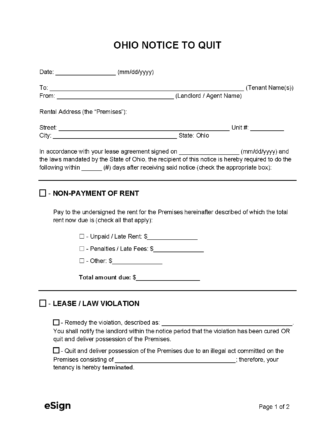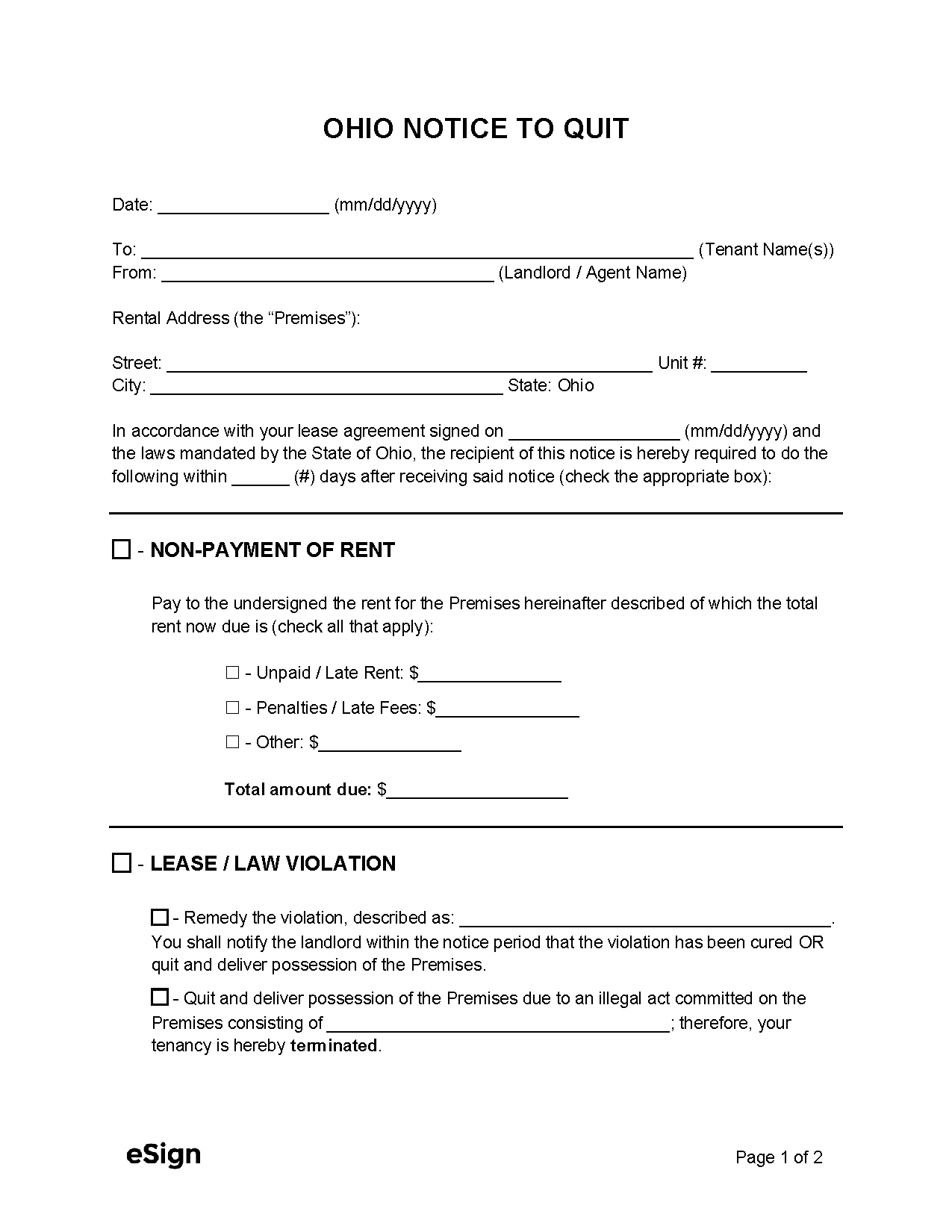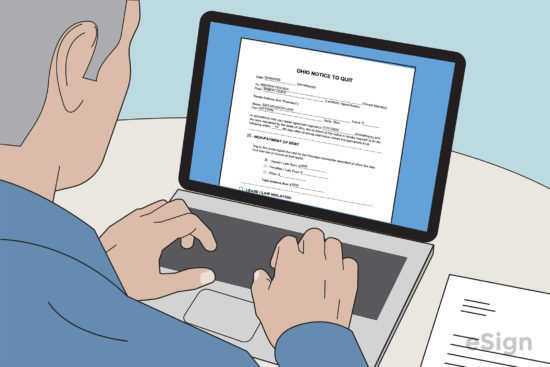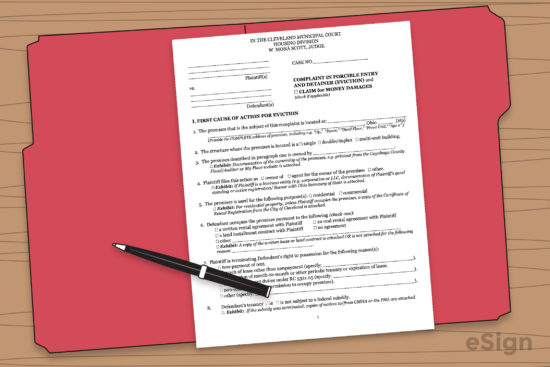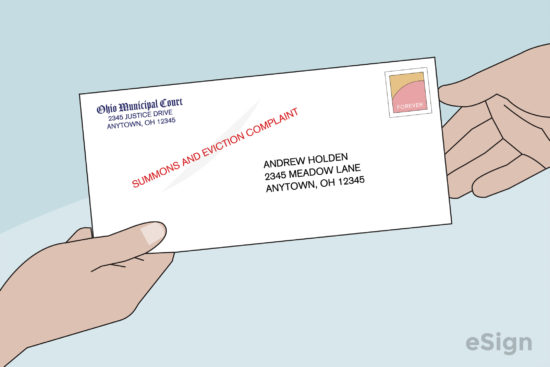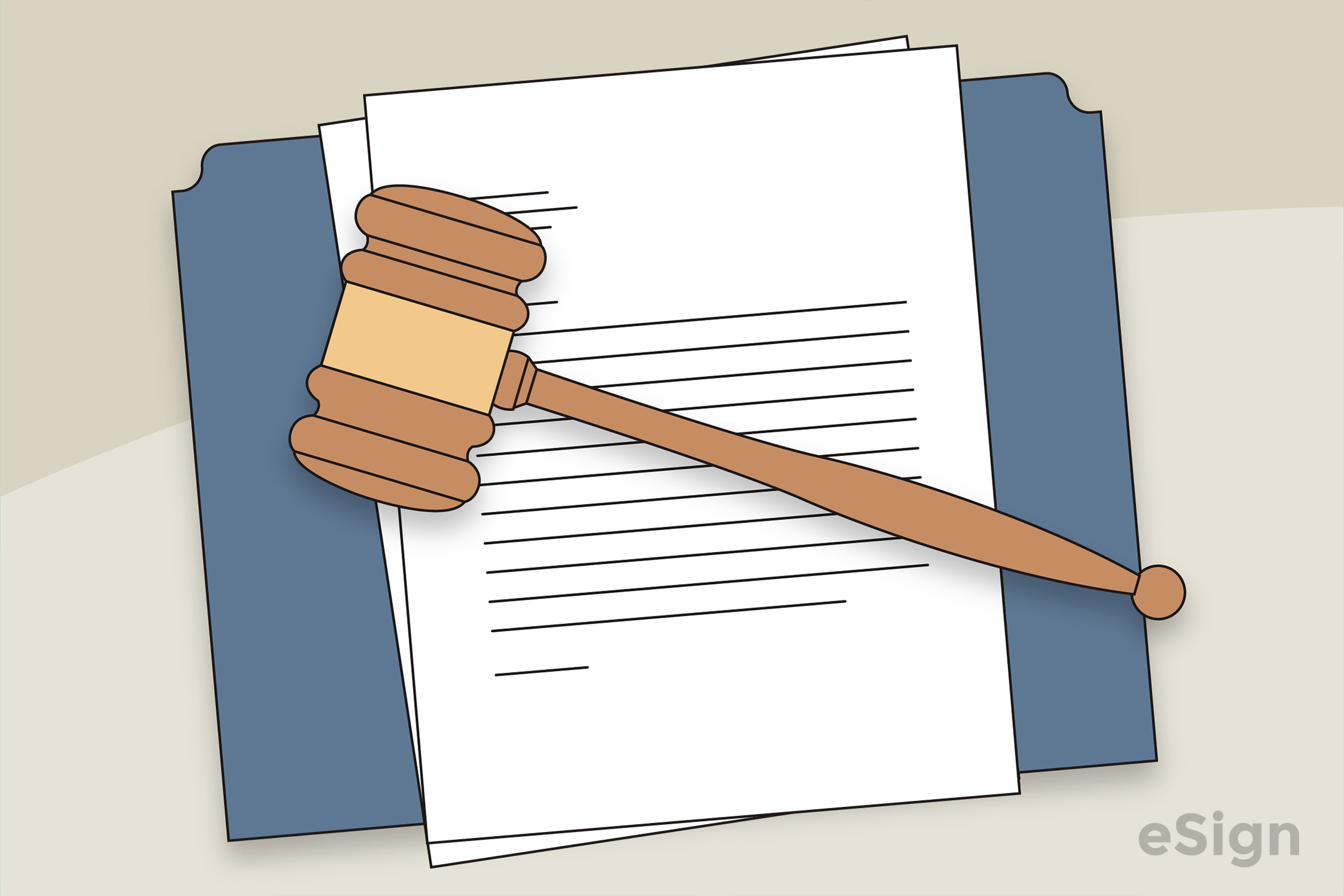Eviction Notices: By Type (4)
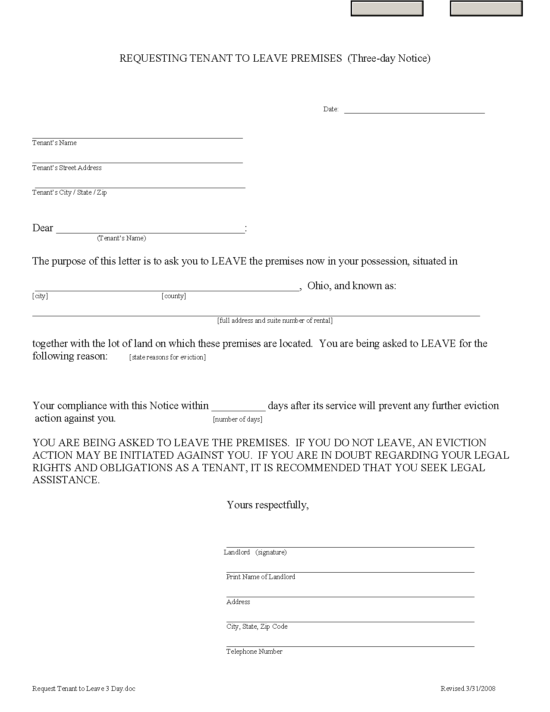 3-Day Notice to Quit | Non-Compliance/Non-Payment – Gives a tenant three days to fix a lease violation or leave the premises. 3-Day Notice to Quit | Non-Compliance/Non-Payment – Gives a tenant three days to fix a lease violation or leave the premises.
Download: PDF |
30-Day Notice to Quit | Statutory Violations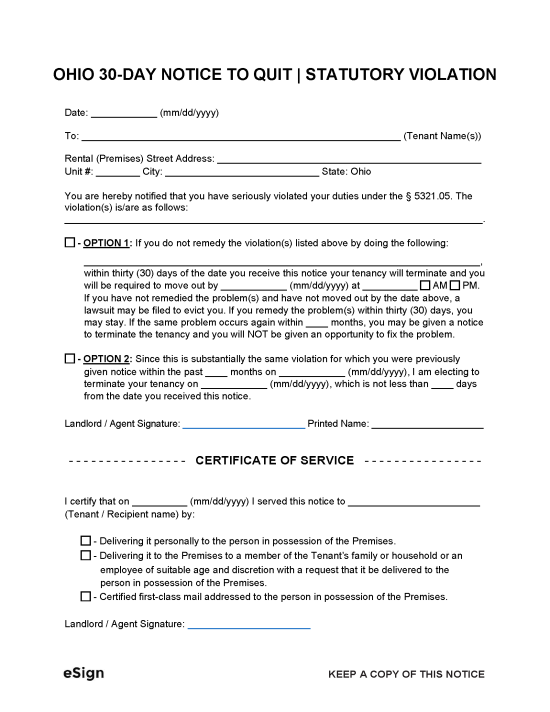 – Notifies a tenant that they have violated their duties under the law and must cure the issue or lose their tenancy. – Notifies a tenant that they have violated their duties under the law and must cure the issue or lose their tenancy.
Download: PDF, Word (.docx), OpenDocument |
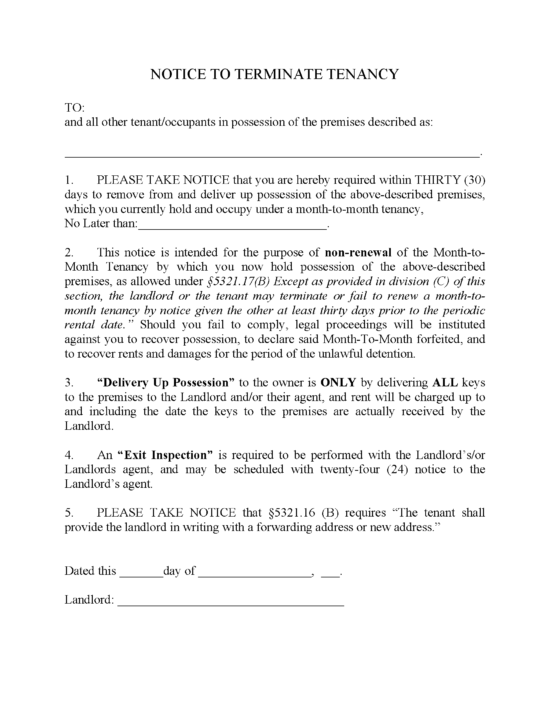 30-Day Notice to Terminate | Month-to-Month Lease – Used by the landlord or tenant to notify the other party they’re ending a month-to-month lease. 30-Day Notice to Terminate | Month-to-Month Lease – Used by the landlord or tenant to notify the other party they’re ending a month-to-month lease.
Download: PDF |
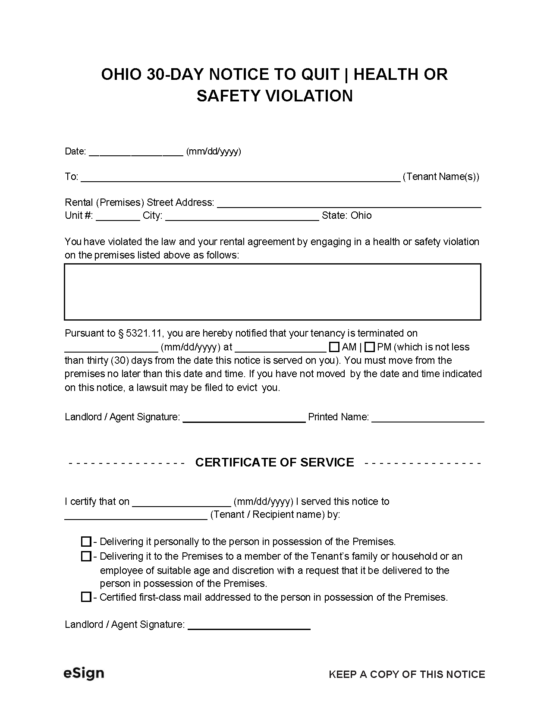 30-Day Notice to Quit | Health or Safety Violation – Informs a tenant that they must remedy a health or safety violation or move out. 30-Day Notice to Quit | Health or Safety Violation – Informs a tenant that they must remedy a health or safety violation or move out.
Download: PDF, Word (.docx), OpenDocument |
Notice Requirements
How to Evict a Tenant in Ohio
Step 1 – Serve Notice to Quit
An eviction begins with the landlord serving a tenant a notice to quit. Service can be done by hand, by certified mail, or by posting the notice on the property.
Step 2 – File Eviction Complaint
If the notice deadline passes and the tenant has not moved out, the landlord can take legal action by filing a Complaint with the Municipal Court (e-filing may be available in some counties). A copy of the lease and notice to quit must be filed too.
It is recommended to check with the court clerk of the applicable county to verify the exact filing and form requirements.
Step 3 – Service of Summons
After the Complaint is filed, the court clerk will mail a Summons and the Complaint to the tenant. At the landlord’s request, the clerk will either deliver the forms via certified mail to the tenant or have them served by a sheriff or other process server in person or by posting on the premises.
Step 4 – Attend Eviction Hearing
At the eviction hearing, the parties may have the opportunity to resolve the issue with a mediator before their case is brought before a judge. If no solution is found, the judge will hear the case to determine whether the tenant will be evicted.
If the landlord prevails, the court will rule that the landlord is entitled to a Writ of Restitution (also referred to as a “red tag”), ordering the tenant to vacate the premises. The landlord may need to submit a Request/Praecipe for Writ of Restitution after the ruling (unless the writ is issued automatically).
Step 5 – Attend Money Hearing (If Applicable)
If the landlord has specified that they are seeking unpaid rent or damages in the Complaint form, there will be a second hearing. If the tenant has not filed an Answer to the landlord’s claims, a default judgment will likely be entered against them.
At the second hearing, the parties will present their cases before a judge, who will determine whether and in what amount damages must be paid.
Step 6 – Writ of Restitution
If the tenant does not move out after the Writ of Restitution is issued, the landlord may arrange a time to arrive with the sheriff to remove the tenant and change the property’s locks.
Generally, a sheriff will execute the writ within 10 days of receiving it. However, certain counties may have shorter deadlines, and it’s recommended to contact the court or sheriff for exact timelines.
